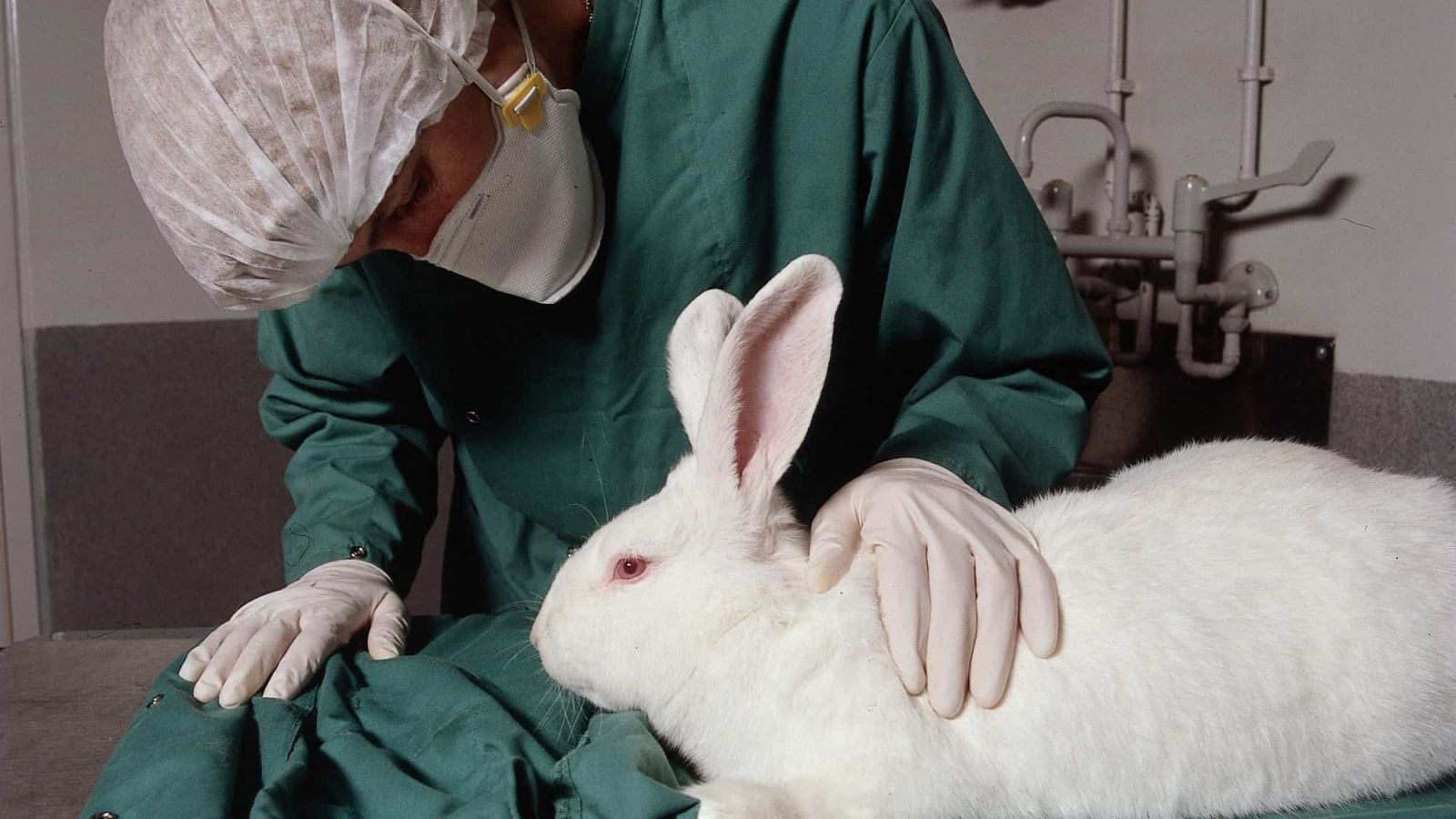 Rabbits (Oryctolagus cuniculus) belong to the family Leporidae. They are often mistaken for hares even though they have different habits and histories. They are medium-sized animals that can grow to the 50cm and 4.5kg in size. Rabbits are herbivores, their diet consists mostly of grass, clover, and cruciferous plants. They are currently not commonly used in research in Great Britain. Rabbits make up just 2.51% of animals in scientific procedures in 2019.
Rabbits (Oryctolagus cuniculus) belong to the family Leporidae. They are often mistaken for hares even though they have different habits and histories. They are medium-sized animals that can grow to the 50cm and 4.5kg in size. Rabbits are herbivores, their diet consists mostly of grass, clover, and cruciferous plants. They are currently not commonly used in research in Great Britain. Rabbits make up just 2.51% of animals in scientific procedures in 2019.
Why are rabbits used in research?
Although rabbits are not commonly used in research, there are many factors and benefits of rabbits in research. They are very docile and non-aggressive animals, which makes them easy and pleasant to handle. Rabbits also have a relatively easy breeding process due to the process being economical and the widely available resources, this makes them an attractive species to use in research. Rabbits also have short life processes including gestation, puberty, and lactation which makes them useful for many types of studies including reproduction, ageing and development amongst others.
What types of research are rabbits used in?
Rabbits are popularly used in antibody research and production. Popularly used rabbits lack the relevant genes to produce antibodies relevant to humans. This means scientists have to introduce the necessary genes to allow the rabbits to produce polyclonal antibodies after being immunised. Several diseases have benefitted from antibody production and research using rabbits including the COVID disease caused by the SARS-COV-2 virus.
Rabbits were the first models for studying atherosclerosis. Researchers have both normal and transgenic atherosclerosis rabbit models. Rabbits have a high sensitivity to a high cholesterol diet which makes them useful a useful and easy model for atherosclerosis research. To date, two different rabbit strains that have different cholesterol sensitivities and have a different blood cholesterol levels have been established, and they’ve been used to evaluate the effectiveness of various drugs and treatments for atherosclerosis.
How are the rabbits looked after?
The use of animals in research is highly regulated, an important part of that regulation is ensuring the animals are housed and cared for correctly. Rabbits have particularly sensitive hearing and therefore, can get stressed relatively at the sound of loud music, other animals and machinery because they can pick up the noises even though humans cannot. Therefore, rabbits are housed individually with sufficient lighting, temperature and humidity.
10 Facts about Rabbits (link)
Find out more about mice in research with our 10 facts infographics!
References:
Housing: https://ori.hhs.gov/education/products/ncstate/rabbit.htm
Why Rabbits in research: https://www.ncbi.nlm.nih.gov/pmc/articles/PMC3283968/
Number of rabbits: https://uaroceania.org/animals/numbers-animals/#Numbers%20of%20animals%20used%20in%202016
Rabbits background: https://www.livescience.com/28162-rabbits.html
COVID antibodies: https://stm.sciencemag.org/content/12/550/eabc3539
Rabbits in atherosclerosis: https://www.ncbi.nlm.nih.gov/pmc/articles/PMC5868506/
See AnimalResearch.info on rabbits
See also AnimalResearch.info on rabbits, and our video of rabbits.




